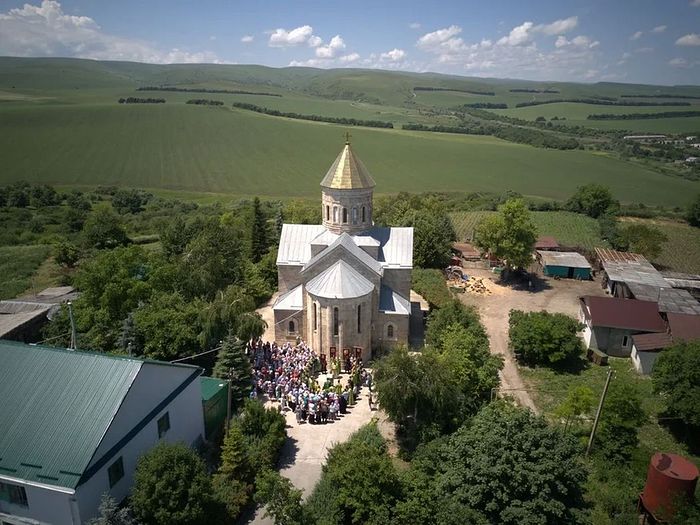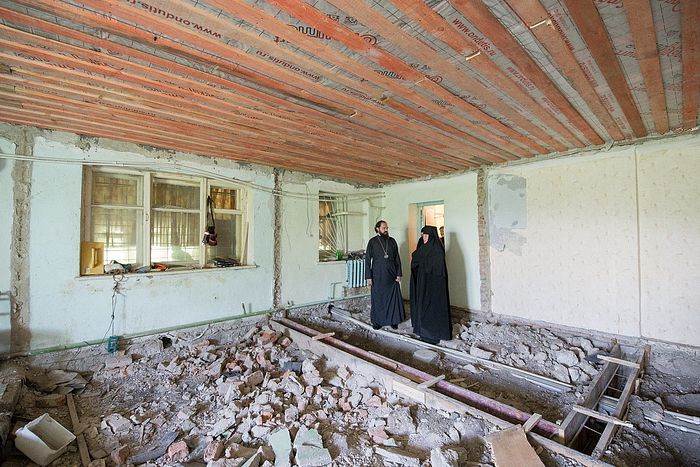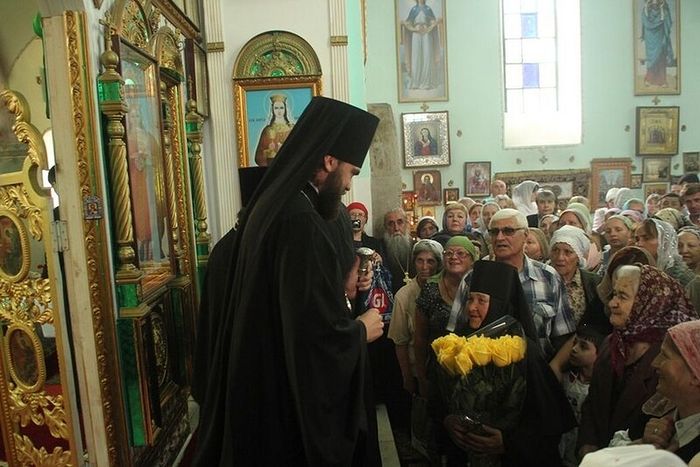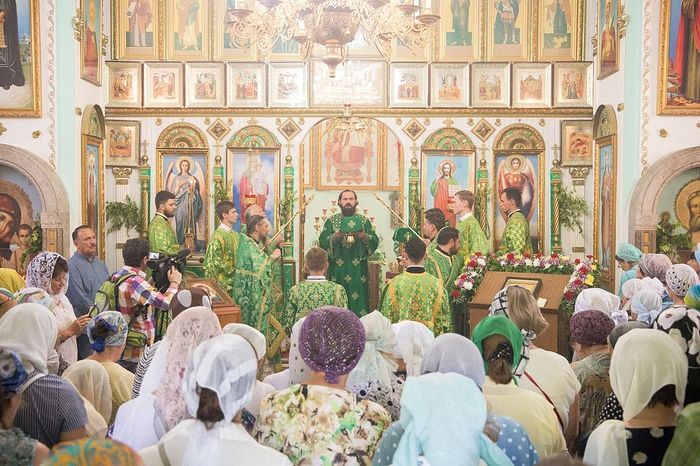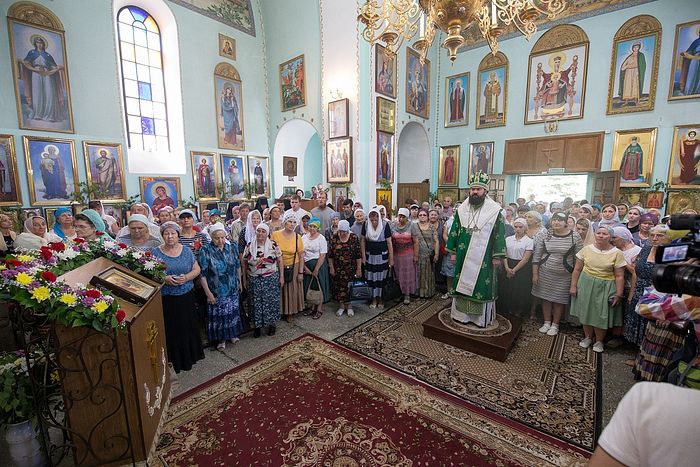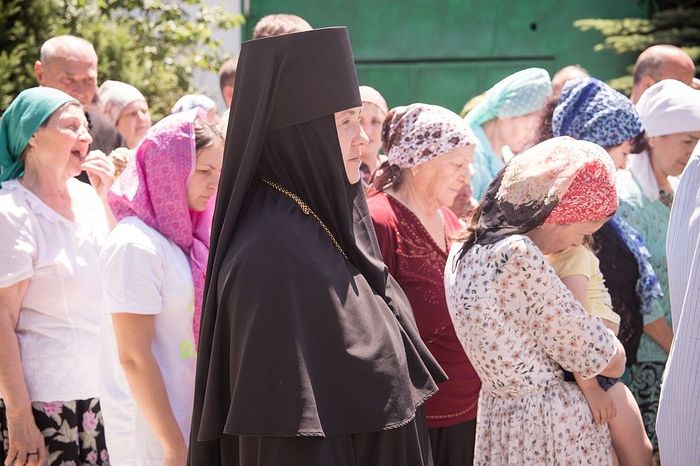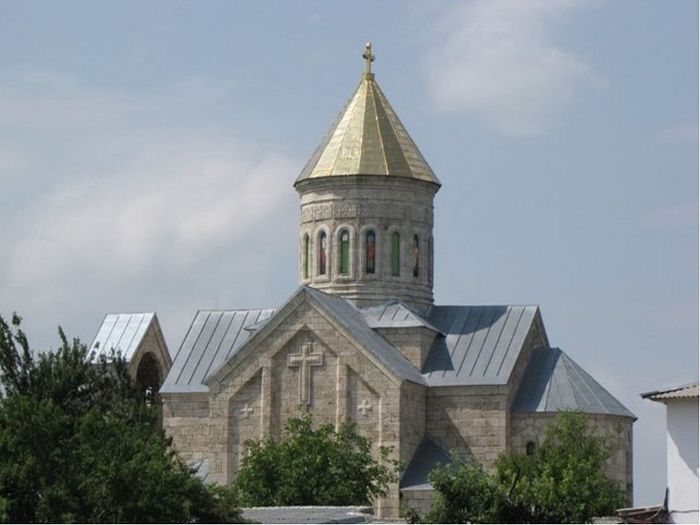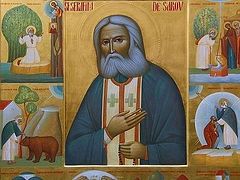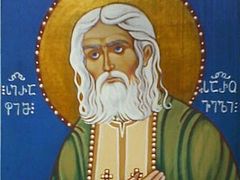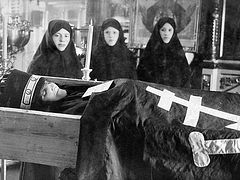Holy Trinity Convent in the Karbadian mountains is popularly known as the Diveyevo of the Caucasus, perhaps because the women’s community formed at the Holy Trinity Church in 1907 chose as its patron St. Seraphim, whose glorification took place just a few years prior and was alive in the memory of the people. The monastery is wondrous in its history, architectural appearance, and the fate of the people associated with it. It was founded by the Russian noblewoman Ekaterina Alexeevna Khomyakova—the daughter of the poet, philosopher, theologian, and historian Alexei Stepanovich Khomyakov.
Her father’s word: “Don’t build ten universities, create one monastery!” became a kind of covenant for her, perhaps not fully consciously at the beginning of her life’s path. But raised in the spirit of love and compassion for her people, on the basis of the primacy of spiritual values, she was later to realize this covenant.
The Khomyakovs often visited the Caucasus, with which they were connected by both friends and family. The family brought up a Kabardian boy named Lukman (Dmitry in Baptism) Kadzokov, whom they cared for as a son. The Khomyakovs gave Lukman a wonderful education, and he became the first Kabardian to graduate from college.
Ekaterina’s sister Sophia had a dacha in Kislovodsk, where numerous relatives and a community of interesting, educated people, representing various peoples, would gather. Relations between various cultures became clearer and nearer.
At that time, many migrants from faraway governorates of Russia were coming to the Caucasus. They were drawn by the nature, climate, and fertile lands of the south. But not everyone managed to get settled, and people often lost what they had gained.
Especially for the settlers, in 1881, Ekaterina purchased a plot of land not far from Pyatigorsk on the Zolka River and founded a small farming village, inhabited by Russian peasants.
To manage the farm, Ekaterina invited a local, the Kabardian Astemir Sheriev, the son of an elder of the village of Karmovo. Despite their different backgrounds, traditions, and way of life, they shared a deep friendship, respect, and mutual support.
After Astemir’s death, Ekaterina took care of his widow and relatives. Fulfilling Astemir’s dying wish, she donated a large sum of money for the construction of a mosque in his home village of Karmovo and invited the famous architect Ismail Alibekov. Raised by Astemir’s widow, Selimkhan Sherieva, a young relative of Mazago Sheriev, long remembered Ekaterina who had helped them, telling everyone that she was a “Giaour with a cross on her neck and a true Muslim in her soul.”
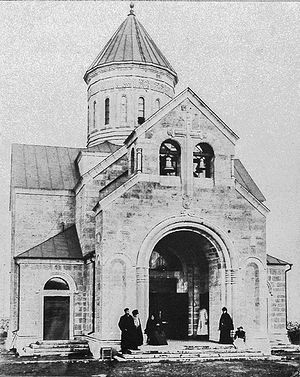 In 1895, she began the construction of a church in honor of the Holy Trinity at her own expense, designed by the academic S. U. Soloviev. It was modeled on an ancient Georgian church of the twelfth century in Gelati. The church was lined with white stones and decorated with carvings with monograms of Christ. This miracle created by Ekaterina was known as Little Mtskheta—a reduced-size copy of the famous cathedral of the ancient Georgian capital. The lines of its architecture organically blend into the landscapes of the foothills of the Greater Caucasus.
In 1895, she began the construction of a church in honor of the Holy Trinity at her own expense, designed by the academic S. U. Soloviev. It was modeled on an ancient Georgian church of the twelfth century in Gelati. The church was lined with white stones and decorated with carvings with monograms of Christ. This miracle created by Ekaterina was known as Little Mtskheta—a reduced-size copy of the famous cathedral of the ancient Georgian capital. The lines of its architecture organically blend into the landscapes of the foothills of the Greater Caucasus.
In 1902, the Holy Trinity Church was consecrated. The bells for it were cast in Moscow at the famous bell foundry of P. N. Finlandsky. All the icons were painted in the Byzantine style by the iconographer and restorer V. P. Guryanov. Unfortunately, the church’s paintings were completely destroyed over the past century. Only fragments remain of the remarkable carved marble iconostasis.
In 1904, at Ekaterina’s request, a women’s Orthodox community with a shelter for orphans and a school and hospital for the local population were founded at Holy Trinity Church. A wonderful garden was arranged nearby, with apple trees, chestnuts, birches, and walnut trees. Many of the trees are still bearing fruit. The spring in the lower part of the garden was considered healing. The Karbadians called the entire area Psynadakha, which means, “beautiful water.”
In 1907, the women’s community in Ekaterina’s village was confirmed as Holy Trinity-St. Seraphim in honor of St. Seraphim of Sarov. By the fall of 1910, the community had turned into a well-maintained monastery with various workshops. The elder sister was Nun Olga (Arnold), a pupil of the St. Petersburg Institute for Noble Maidens. In 1911, there were sixteen girls training in the workshops. During the First World War, the community’s orphanage was expanded to 150 wards due to receiving the children of fallen soldiers.
The monastery was closed in the late 1920s and the community was transformed into a labor commune. The fate of the monastery’s foundress, Ekaterina Khomyakova, is unknown after 1915. A state farm was organized on the territory of the village, which was visited by Nikita Khrushchev, who ordered that the dilapidated church, which was used as a warehouse, be destroyed. But with God’s help, the church has survived to this day.
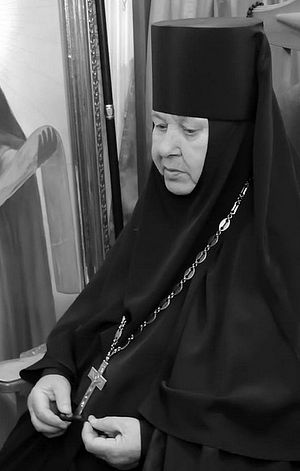 In 1995, with the blessing of Metropolitan Gedeon of Stavropol and Vladikavkaz, the restoration of the Holy Trinity Monastery began. Mother Antonia (Bobyleva) was appointed as the abbess.
In 1995, with the blessing of Metropolitan Gedeon of Stavropol and Vladikavkaz, the restoration of the Holy Trinity Monastery began. Mother Antonia (Bobyleva) was appointed as the abbess.
In 1998, the author of this article managed to visit the reviving Holy Trinity Monastery and speak with Matushka Antonia. I remember the foggy December day, with building materials stacked nearby in the monastery yard: boards, stones, and a small fire nearby, around which the workers would drink tea and warm themselves.
Next to the Holy Trinity Church is a small two-story house where three nuns live: Mother Antonia, Mother Vera, and Mother Nadezhda. While the church is being restored and there are no services in it, they usually read the entire daily cycle of services as appointed in their prayer corner. Mother Antonia is the widow of a priest. She has such simplicity and is so welcoming that the small room with colored curtains, a round table, and a potbelly stove at the window starts to feel like home, where everyone accepts you as a loved one.
“My husband died ten years ago, and I’ve been a nun for eight. I wanted to have a secret tonsure. In our family, all the men were ordained: priests, deacons, and my aunt was received into one of the Kiev monasteries while still a young girl, and two other aunts were also nuns, living in Vladikavkaz. Several years ago, I was planning to join a monastery. But wherever I went, my soul found no rest. And I kept thinking: If only we had opened a monastery in the North Caucasus…
“I didn’t know anything about this place, and when I arrived, I immediately liked the church. It reminded me of Georgia, Tbilisi, where I had often visited.
“One evening, the dean Fr. John Ostapchuk and Fr. Alexander (Ischein), now the Archbishop of Baku and Azerbaijan, unexpectedly came to see us and started trying to persuade me to head the community of the nascent convent. It was awkward. Who am I? We need to promote young, educated people, and I’ll just go do my obediences, washing, weeding, and whatever is needed. When the decree came, I didn’t sleep the whole night, and in the morning I went to see my son, Fr. Valentine, and told him: “We’re going to see Vladyka!” We got as far as Novopavlovsk when suddenly it started snowing. It was like a wall of snow, up to the car windows. They wanted to go back, but I insisted. We went a little further and the battery died. The car stopped on its own. We called Vladyka, and he put us at ease, saying everything would be fine.
“I arrived here in May. Everything had been neglected. There were tall weeds all around and nowhere to sleep. Then we bought and renovated several apartments. Now I feel at home here. I always dreamed of having a house near a church. The majority of the locals are very good people. Their vegetable gardens are located not far from us. They carry two buckets of potatoes and give us one. We thank them, but we refuse, because they have many children. And yet they share.
“Not far from the church there is a spring, with exceptionally delicious water. The locals often go there for water. They say this spring already existed in the time of Ekaterina Khomyakova, the foundress of the church.
“So we live… What can I say? A monastic should be silent more, eyes lowered, obedience, humility, patience. The times are not easy now, but thank God, so far there’s been no despondency.”
A few years later, the church was restored and consecrated. Not only monastics began to gather around the monastery, but also a community of people who really care about this holy place. They started their own small farm and garden. The architecture of the church, unusual for these places, the picturesque area, and, of course, the hospitality of Mother Antonia began to attract pilgrims. In 2011, a piece of the belt of the Most Holy Theotokos was brought by Bishop Theophylact of Pyatigorsk and Cherkessk to be kept at the monastery.
There are especially many guests here on Pentecost—the monastery’s patronal feast.
On November 28, 2018, Abbess Antonia departed to the Lord. Mother Tamara (Ushakova) was appointed in her place.
“I came from St. George’s Monastery in Essentuki,” says Mother Tamara. At first it was very scary, without experience, without preparation… But I had the support of our Vladyka—Archbishop Theophylact of Pyatigorsk and Cherkessk and the abbess of St. George’s Monastery, Mother Barbara (Shurygina).
“Our monastery is not large at all: two nuns and a novice, and several nuns from St. George’s come help us every week—sisterly support.
“If there is a priest, we serve the Liturgy, and on the other days we read the daily cycle of lay services. When the problem with the coronavirus arose, we closed the gates of the monastery, but it was then that we felt as never before how much the people need us. Many people called, and some came just to pray at the gates.
“Otherwise, the monastery lives a quiet, secluded life. There’s a special atmosphere here. The silence and beauty of Caucasian nature—everything all around disposes one to prayer. I would like to see the sisterhood increase. I hope it will happen once we’ve finished reconstruction on our small building of cells.”

